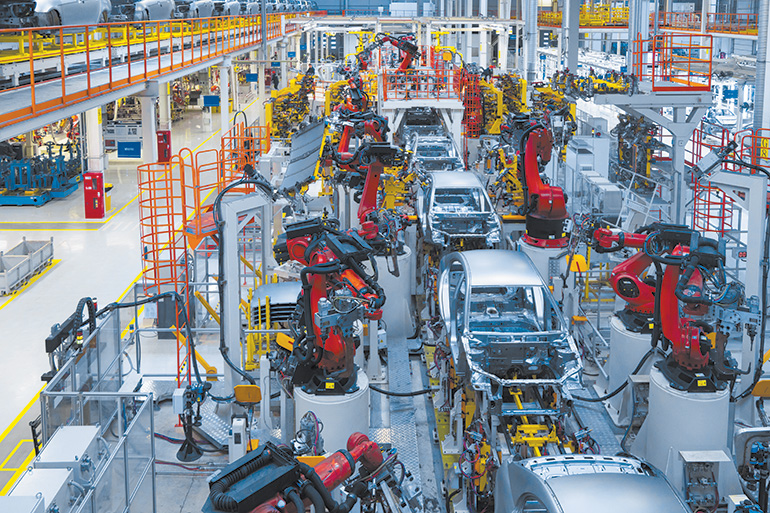Sustained optimism for Philippine automotive industry

The automotive and mobility sectors are continuing to transform, with mobility solutions and cutting-edge technology reshaping the landscape with greater force and impact. As of 2023, the demand for automobiles is seen to be increasing, as global consulting management firm McKinsey & Company reported that there are 1.3 billion automobiles worldwide. It also noted that the sector is trying its best to achieve a mobility ecosystem that is “intelligent, seamless, and environment-friendly.”
These developments come in time when the Philippine automotive industry is steadily proceeding towards sustained growth in the past few months. As data from the Chamber of Automotive Manufacturers of the Philippines, Inc. (CAMPI) and the Truck Manufacturers Association (TMA) show, the first quarter of 2023 saw growth and pent-up demand for motor vehicles, translating to boost in sales in the sector.
Starting off with January, the high demand for both passenger and commercial vehicles lead to a year-on-year (y-o-y) 42% increase, from 20,765 units last year to 29,499 units this year. Commercial vehicle sales rose by 46.8%, Asian utility vehicles (AUVs) by 87.1%, light commercial vehicles (LCVs) by 40.9%, and light truck sales by 10.8%.
In February, vehicle sales increased by 27.2%, from 24,304 units to 30,905 units, boosting the industry expectations that pre-pandemic sales can be surpassed this year. Commercial vehicle sales grew by 29%, LCVs by 20.4%, AUVs by 84.1%, and passenger cars by 21.6%, which contributed to the increase in sales by double digits.
“The industry demonstrated new positive sales growth of 27.2% in February 2023 on a year-on-year basis, a clear indicator of continuously progressing auto industry from the pandemic,” CAMPI President Rommel R. Gutierrez was quoted as saying in a BusinessWorld report. “Various economic favorable indicators are prevailing, improving the overall outlook of the economy alongside increasing consumer demand for new motor vehicles.”
By March, the sector still saw a strong consumer demand, which contributed to a 24% y-o-y increase in new vehicle sales, increasing from 29,685 units sold to 36,880 vehicles. Commercial vehicles grew by 16.3%, AUVs by 54.2%, LCVs by 10%, light trucks by 9.2%, and passenger car sales by 51.8%. With the positive numbers in vehicle sales in this particular month, Mr. Gutierrez said that the car industry is optimistic for the coming months because the consumer demand for new automobiles will continue to rise.
April tallied a yearly increase by 21.8%, increasing from 25,149 total sales to 30,643 since April last year.
Compared to numbers from March this year, however, April sales were lower. The report showed that commercial cars are down month on month to 13% due to rising demand for LCVs, which rose by 17.3% and AUVs by 49.2%. Passenger car sales, which rose y-o-y by 16.9%, still was lower compared to March sales.
In the first quarter, the Philippine economic growth slowed down to 6.4% from 8% compared to last year, attributed to lower consumer spending, high loan rates, and higher inflation. Yet, government officials are optimistic that the year’s 6%-7% growth target can still be met.
The automotive industry, likewise, is optimistic “to fully recover from the pandemic-induced challenges.” Mr. Gutierrez added that the industry is “well-positioned to grow to significant levels, even higher than the pre-pandemic figures.”
“It is worth noting that the industry has already recorded this growth trajectory in the past four months compared to the 2019 levels,” he added.

Due to the robust market demand, vehicle sales in May jumped to 45%, a double-digit growth compared to last year.
The report revealed that commercial vehicle sales jumped to 46.3%, AUVs by 55.9%, and passenger car sales by 40.6%. Overall, the number of vehicles sold increased from 26,370 to 38,177 over the previous year.
“The steady year-on-year growth recorded in the first five months gives the industry a reason to be even more optimistic and grateful at the same time as attaining its growth forecast this year felt even closer to reality and proves possible,” Mr. Gutierrez said.
“The industry also welcomed the country’s sustained economic improvement in major economic sectors, which remains an important factor towards economic and market conditions that are favorable for the industry and consumers alike,” he added.
Positive growth in the auto industry remained in June as it saw a 27% increase in car sales, increasing from 28,601 units to 36,311 vehicles compared to the same month last year, which Mr. Gutierrez described as “a reflection of improved consumer spending for big-ticket items amidst the significant market for new motor vehicle sales, the main growth anchor of the industry.”
In the first six months, the top car manufacturers in the Philippines have already exceeded expectations with their robust sales. These include Toyota Motor Philippines Corp., selling 93, 575 units, equivalent to 46.23% market share. Second in ranking is Mitsubishi Motors Philippines Corp., with 37,001 units (18.28%), followed by Ford Motor Co. Phils., Inc. with 13,838 units sold (6.84%), Nissan Philippines with 13,196 units (6.52%), Honda Cars Philippines with 8,668 units (4.28%), and Suzuki Phils., Inc. with 8,615 (4.26%).
According to Mr. Gutierrez, the strong performance of the automotive sector in the first half of the year can bring the industry closer to its 2023 sales target of 395,000 units.
“The CAMPI-TMA sales of 202,415 units recorded year-to-date, equivalent to a 30.7% increase from the same period a year ago, sends a strong signal of sustained optimism for the industry as we welcome the second half of the year. Maintaining this level of growth on a monthly basis, the industry has indeed high hopes of achieving or even exceeding its sales target for this year,” he said.
Earlier this year, CAMPI said it is targeting to grow sales by 10% to 15% this year.
In 2022, CAMPI and TMA surpassed its sales target of 336,000 units as the members of both groups sold a total of 352,596 units. These sales are also near the pre-pandemic level of 369,941 units sold in 2019. — Angela Kiara S. Brillantes



